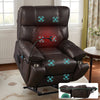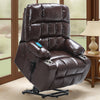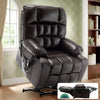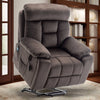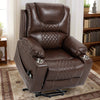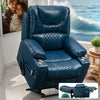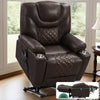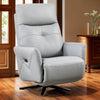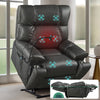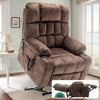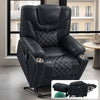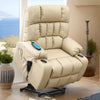The Rise of Comfort: The Growing Demand for Plush Furniture
The Market Shift in American Furniture Preferences
American homes are changing. People want cozier spaces now. Plush furniture is in high demand. Soft, comfy couches are replacing stiff ones. Big, cushy recliners are a hot item. This shift is clear in sales data. Furniture stores report more plush items sold. Online searches for "soft couches" are up. It's not just a fad. It's a real change in what people want.
Health and Wellness Trends Boosting Plush Furniture Sales
Health and comfort go hand in hand. People are more aware of their well-being. This affects their furniture choices. Plush furniture offers better support. It helps reduce stress and promotes relaxation. Many see it as a form of self-care. Doctors even suggest soft seating for some back issues. The wellness trend is pushing plush furniture sales up. People want their homes to be a haven. Soft, cozy furniture fits this need perfectly.
The Role of Social Media in Plush Furniture Popularity
Social media has a big impact on trends. Plush furniture is no exception. Instagram and Pinterest are full of cozy room photos. These images often feature big, soft couches. They get lots of likes and shares. This exposure drives the trend further. Influencers showcase their plush furniture. Followers want to copy the look. It's a cycle that keeps boosting popularity. The "comfort aesthetic" is now a social media hit. This online buzz translates to real-world sales.
Analyzing Consumer Behavior: Who is Buying the Big Reclining Chairs?
Demographic Insights: The Plush Furniture Shopper
Who's buying all this plush furniture? The data shows some clear trends. Millennials are a big part of this market. They value comfort highly in their homes. Gen X is also jumping on the trend. They're upgrading their living spaces with softer options. Baby Boomers like the support of plush recliners. Families with young kids prefer durable, soft couches. Singles in small apartments go for oversized, cozy chairs. Income levels vary, but the desire for comfort is universal.
Psychographic Profiling: Understanding the Mindset Behind the Purchase
Buyers of plush furniture share certain traits. They often prioritize comfort over style. Many are homebodies who enjoy nesting. These shoppers value relaxation highly. They see their home as a retreat from stress. Quality is important to them. They're willing to pay more for comfort. Many are health-conscious and see good seating as important. Some are influenced by nostalgia for childhood comforts. Others simply love the luxurious feel of plush items.
Geographic Factors Influencing Plush Furniture Trends
Plush furniture trends vary by location. Colder regions show higher sales of big, cozy items. Cities with small apartments see demand for compact but plush chairs. Suburban areas favor large sectionals and recliners. The South has a growing market for outdoor plush furniture. Coastal areas prefer moisture-resistant plush options. Rural areas often go for durable, family-friendly plush couches. Climate and living space play big roles in these choices.
Impact on the Furniture Industry: Adapting to the Plush Movement
How Manufacturers are Innovating with Plush Materials
Furniture makers are getting creative. They're using new materials for plush items. Memory foam is being used in more products. Eco-friendly stuffing options are on the rise. Some use recycled materials for a softer feel. Fabrics are evolving to be softer yet more durable. Stain-resistant plush materials are now common. Manufacturers are also working on allergen-free options. The goal is to make plush furniture practical and long-lasting. Innovation is key to meeting the growing demand.
The Economic Implications of the Plush Furniture Trend
The plush trend is boosting the furniture industry. Sales of soft, cozy items are up significantly. This has led to more jobs in manufacturing. Retailers are expanding their plush furniture sections. Online sales of these items have skyrocketed. The trend has also sparked new businesses. Specialty plush furniture stores are popping up. It's not just big companies benefiting. Small, custom furniture makers are thriving too. The economic impact is felt across the industry.
Future Outlook: What's Next for Plush Furniture in the United States
The future looks soft for plush furniture. Experts predict continued growth in this sector. New technologies will make plush items even more comfortable. Smart features may be integrated into soft furniture. Customization options are likely to expand. We may see more modular, adaptable plush pieces. Sustainability will become a bigger focus. The line between indoor and outdoor plush furniture may blur. As homes evolve, plush furniture will adapt too. It's clear that comfort will remain a top priority for American consumers.








